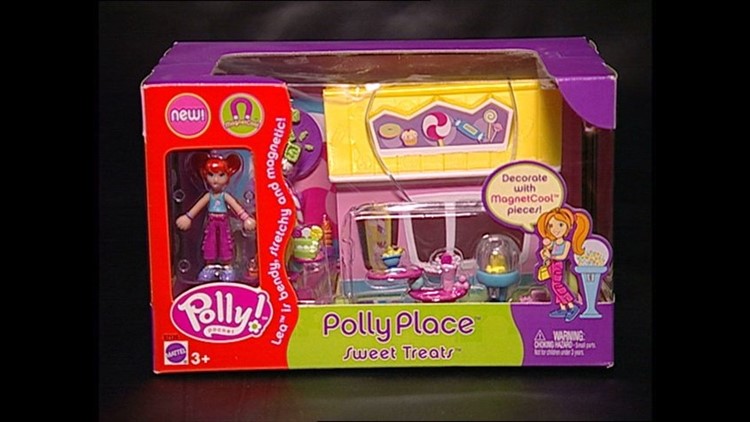(CNN) — Several months ago, Meaghin and Jonathan Jordan were strolling through a shop near their home in Kiln, Mississippi, when they spotted a box of high-powered magnets that could be arranged and rearranged into various shapes.
“We said, ‘These look neat. This would be something fun for us to do,'” Meaghin recalls. So the couple bought the magnets.
It ended up being the worst purchase of their lives.
Even though they say they put the magnets up on a high shelf, their son Braylon, almost 2 years old, somehow swallowed eight of them.
If they had been just little balls, it wouldn’t have been much of a problem; he would have just passed them. But because the magnets were attracted to one another, they formed a clump and bored a hole through his intestines.
Braylon has been in the hospital for nearly two months, most of that time spent in intensive care.
He’s had more than six surgeries. He developed a bloodstream infection and had to be completely sedated for three weeks. More than once, doctors thought he would die.
He’s scheduled to leave the hospital this week, but he still needs to have an intestinal transplant because much of the tissue had to be removed.
There are no recent studies on how many children have ingested high-powered magnets, although the Consumer Products Safety Commission has received reports of 200 cases since 2008.
One of Braylon’s physicians, Dr. R. Adam Noel, an associate professor of pediatrics at the Louisiana State University Heath Science Center in New Orleans, surveyed his fellow pediatric gastroenterologists to get an idea of how often this occurs.
The 33 physicians who responded to Noel’s survey had altogether seen 82 young patients who had swallowed magnets. Most of these kids, like Braylon, had bowel perforations.
Tuesday, Noel and other pediatric gastroenterologists will meet in Washington with the CPSC to ask what they can do to help make sure more children don’t suffer.
“I’m surprised by how little protection there is,” Noel says.
Product recalls, even bans, are ‘on the table’
Magnets have a long and not very happy history with the CPSC. In 2006, the agency and Mattel announced a voluntary recall of more than 4 million sets of Polly Pockets, plastic dolls whose clothes and accessories contained magnets.
A spokesman for the CPSC says the agency might do something similar with adult magnet toys, such as Buckyballs and NeoCubes.
“We’re an agency with a history of a few bans,” says the spokesman, Scott Wolfson. “All options are still on the table.”
Companies that make magnetic “adult desktop toys” argue that the products would be safe if consumers used them correctly.
“You have to keep them up high, like scissors, or prescription drugs,” says Alan Schoem, a lawyer for the company that makes Buckyballs, the leading adult magnet toy on the market. “You tell kids not to touch the stove. It’s no different with a product like Buckyballs.”
There are five warnings on the packaging and instructions for Buckyballs, he says, and the company won’t sell them in stores that cater exclusively to children. Plus, he says, they have an education program for stores, physicians and schools.
But some doctors wonder if warnings and education are enough. If there are hundreds of magnets in each set, parents might not notice that a few roll away. Since magnets are fun to play with and they look like candy, young children will likely try to eat them.
“Is there really any truly safe way of keeping these products out of the hands of children?” asks Dr. Maria OIiva-Hemker, chief of the division of pediatric gastroenterology at Johns Hopkins University School of Medicine, who plans on attending the Tuesday meeting in Washington.
‘Not your grandfather’s magnets’
Noel’s presentation to the CPSC is titled “Not Your Grandfather’s Magnets.” Called “rare earth” or “neodynium” magnets, they’re much more powerful than their regular counterparts.
Dr. Steven Schwarz, a professor of pediatrics at Downstate Medical Center in New York, knows how strong these magnets’ attraction really is. He recently removed a bracelet made of 29 high-powered magnets from the stomach of a 13-month-old girl.
“It’s not easy to pull them apart,” he says. “You can feel the resistance.”
Since these magnets are more powerful, they’re more likely to clump together inside the body.
“Normally, who cares about little round balls? But these are little round balls that can twist your intestines,” Oliva-Hemker says.
The Jordans, after their horrific experience with Braylon, are all for a recall.
“I would love to get them banned,” Meaghin says. “I don’t want this to happen to anyone else.”
If you suspect your child has swallowed a magnet, please seek immediate medical attention.



